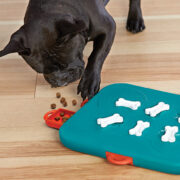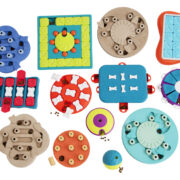Jingle bells, Batman smells, and Christmas lights, pine needles, and Christmas tree ornaments are scattered all over the floor after your cat pulls the Christmas tree down. Ah, it’s Christmas time, and that perennial battle between cats and cat owners to keep your cat from trashing your Christmas tree has begun. It’s a holiday season tradition!
If you can cat-proof your tree, however, your holiday season might go much better. At the risk of breaking that disastrous tradition, let’s explore some effective ways to make sure everyone has a holly, jolly Christmas!
Choosing Your Christmas Tree
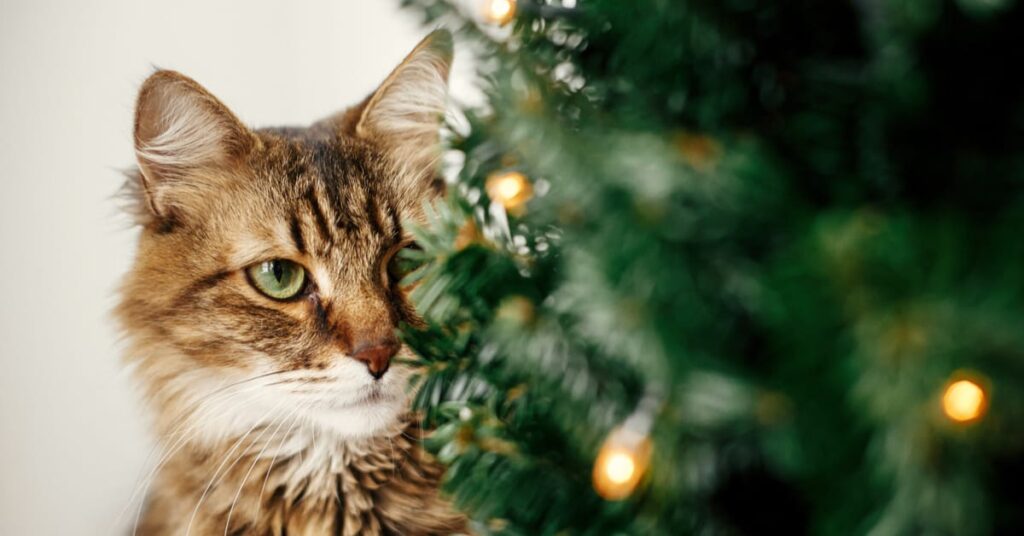
Cat-proofing your Christmas begins with the choice of a Christmas tree. While real trees are great, there are a couple of reasons you might consider buying an artificial tree. For one, pine needles can be dangerous if your cat decides to chew on them.
Pine needles can actually cause a serious health problem if your cat happens to swallow them. They can puncture the intestines which can be fatal for your feline friend. Additionally, pine sap is very toxic to your cat. It can cause liver damage and that can lead to death.
Aside from the needles, the tree water at the base of the tree can be toxic to your pet. Many companies put chemicals on the tree to make it live longer, but these substances can be toxic to your cat since they can leach into the water at the base of the tree.
What’s more, fire retardants are sprayed onto Christmas trees to reduce the risk of a fire. These can also leach into the tree water at the base of the tree, and of course, these chemicals can cause problems if your kitty ingests them by eating the pine needles too. These are all great reasons to consider buying a fake tree instead of a real one.
One final consideration when buying a tree is the size. You might want to buy a smaller Christmas tree so that it’s less likely to hurt your feline pal if it falls over on top of them. Smaller trees also make for easier clean-up if that happens.
Set Up a Meet and Greet
While you might like to bust out the ornaments right away, it can be helpful to wait and let your cat get used to your Christmas tree. The hope is that he will become bored with it and leave it alone once you have it decorated.
Try setting it up a few days before you decorate so your cat can get used to its presence. Hopefully, he’ll lose interest in it so you won’t have your little climber causing a disastrous mess just when you least expect it.
Ensure a Solid Base of the Tree

Since what usually causes the problem is your cat climbing the tree and pulling it over, if you make sure you have a solid base, you can help ensure that won’t happen. It might even be a good idea to secure it to the wall with some kind of wire close to the top.
You also want to make sure your tree stand is solidly attached and firmly held in place. This will help to keep both your kitty and your booty safe for the holiday season.
Use a Tree Skirt
If you do go for the real thing, make sure you cover the tree water bowl with a tree skirt. You can also place your presents on top of the skirt to ensure your cat can’t get to the water bowl. What’s more, there are some tricks you can use to discourage your feline friend from investigating.
Cats don’t like aluminum foil and so you can wrap the tree trunk with aluminum foil to keep him from climbing. You can also put some things around the base of the tree that smell bad to your cat. Orange peels and other citrus scents, citronella, bitter apple, pine cones sprayed with apple cider vinegar and any other kind of natural repellant are all things you strategically place around the base of the tree to keep your little Garfield away.
Location, Location, Location
Another consideration with a real tree or a fake tree is where you put it in your house. If possible, you might want to keep it away from the launch zone your cat uses to get to higher places.
If your cat typically uses certain furniture items as a launchpad, you can reduce his temptation to pounce on the tree by making sure the tree is placed far away from these items. That will help to keep him from thinking he can jump onto the tree.
Decorate the Tree Strategically
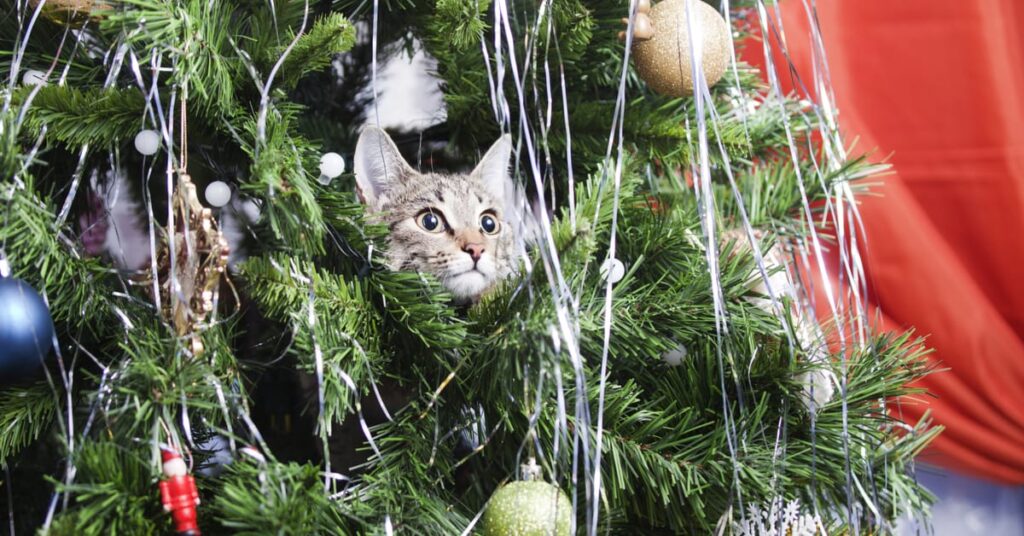
It wouldn’t be Christmas without the tinsel and ornaments and Christmas lights decorating the tree. But all of those things are also sources of temptation for your cat. So, how can cat owners help reduce that temptation? Here are several ideas for decorating your tree.
1. Place ornaments up higher
By placing your dangly ornaments toward the top of the tree, it’s harder for your cat to get at them. You can also place them further in on the branch rather than at the ends. That means fewer dangling items to draw your curious cat in.
2. Bury your Christmas lights in the center of the tree
If you put the Christmas lights more in the center of the tree, your cat will be less likely to chew on the wires. You will also want to use cord covers on the end of the wire — the part that plugs into the wall. These can be helpful as a cord protector, but you should still be sure to unplug the lights when you’re not home. If you do find that your kitty is chewing on the electrical cords, you can try to cover them with cord covers, but you might seriously consider skipping the lights since you don’t want to risk your furry friend being electrocuted.
3. Tie your Christmas ornaments on the tree
By tying the ornaments to the tree and making sure they’re secure, you can avoid your cat being injured by those little hooks. If he manages to swallow one of those, it could cause serious problems.
4. Don’t use tinsel
You might love tinsel, as many people do, but it can really be a serious health hazard to cats. Your curious cat almost can’t resist eating it, and it can get stuck in their intestines and cause a type of blockage that’s typical with a string foreign body. There are other less hazardous options for tinsel like using paper, wood, or even felt decorations. Those can be just as pretty but way less hazardous to your feline friend’s health.
5. Watch out for other risky decorations
Some other common Christmas decorations to avoid are real candles, small dangly ornaments that might be choking hazards, and breakable ornaments that have that fake snow, which can contain hazardous chemicals. You’ll also want to be on the lookout for possibly toxic garlands, like mistletoe, and plants, like lilies and holly (not so jolly for your cat). It’s common to have some of these in your living room at Christmas, but that often puts them in easy reach of your cat.
6. Add some jingle bells to your decorations
This might sound contradictory, but by adding bells to your Christmas tree decorations, they will act as an alarm for when your cat is in the tree. At least, you’ll know he’s up to no good.
Try a Little Training
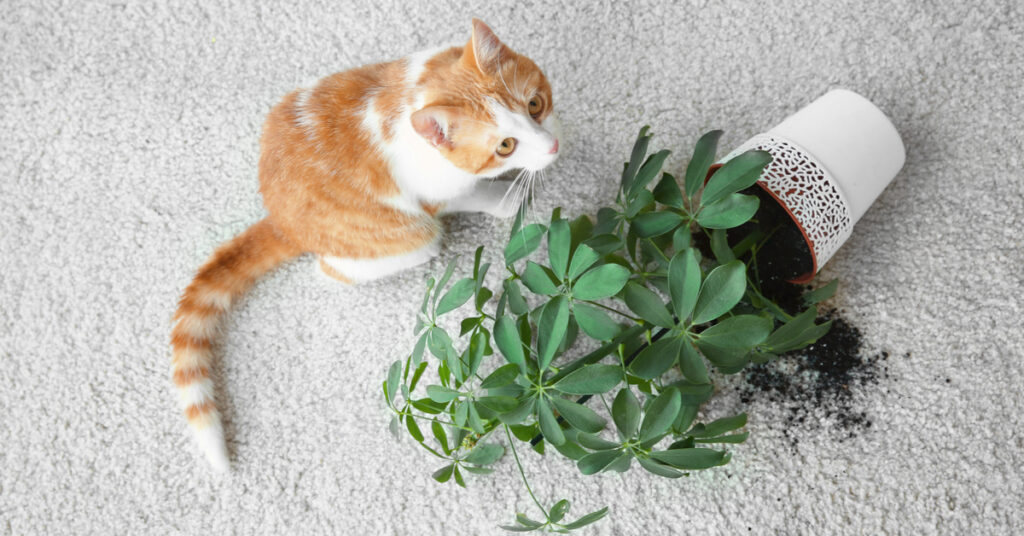
I know what you’re thinking, “Train my cat? You’ve got to be kidding!” But there are ways cat owners can train their furry friends. One well-known method many cat owners have used to train their cats not to use their couch as a scratching post is the spray bottle filled with harmless water.
Cats hate being sprayed with water, and so, you can use that to discourage them from going near the tree or other Christmas decorations. You might also make sure they have plenty of cat toys filled with catnip to occupy their time and attention during the holiday season. If you combine that by periodically spraying your tree with a mixture of citronella oil and water, you’ve got yourself a new DIY cat-proof Christmas tradition!
What Not to Do
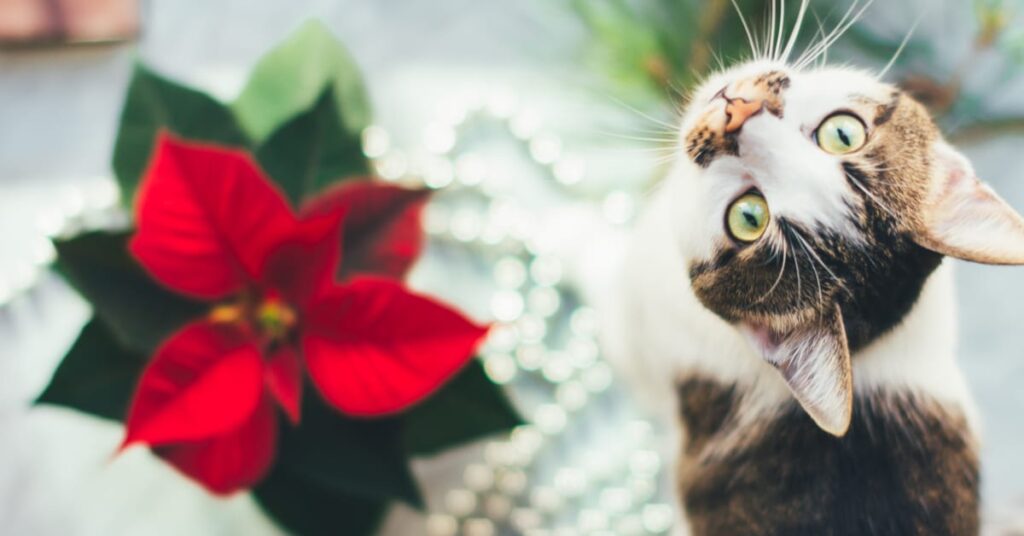
Finally, there’s a list of things you absolutely shouldn’t do to ensure a happy, healthy holiday season for every member of your family. The first among these is that you should never, ever use aspirin or other non-steroidal anti-inflammatory drugs to extend the life of your tree. These kinds of drugs are highly toxic to your cat and can cause bleeding and ulcers in their stomach and intestines.
You should also avoid using tree preservatives. These frequently contain very high concentrations of fertilizer which gets into the tree water. If your cat is able to get to that and drink it, he could be poisoned.
Don’t assume your cat won’t eat the artificial tree. While he is less likely to bother a fake tree, that doesn’t mean he won’t play with it and attempt to chew on parts of the tree. Even though a fake tree wouldn’t have the tree preservatives on it, if he bites off small parts of the tree and swallows them, they can still cause serious health problems.
The last thing you shouldn’t do is to use negative reinforcement training techniques with your cat. This kind of training just simply doesn’t work with cats, and it makes them more prone to skittish and impulsive behaviors. Like dogs, cats don’t understand that you’re yelling at them or hitting them because of something they may have done hours ago.
For training a cat — just like with your dog — positive reinforcement techniques get much better results. Additionally, they strengthen the relationship cat owners have with their fluffy, furry little friends.
Final Thoughts
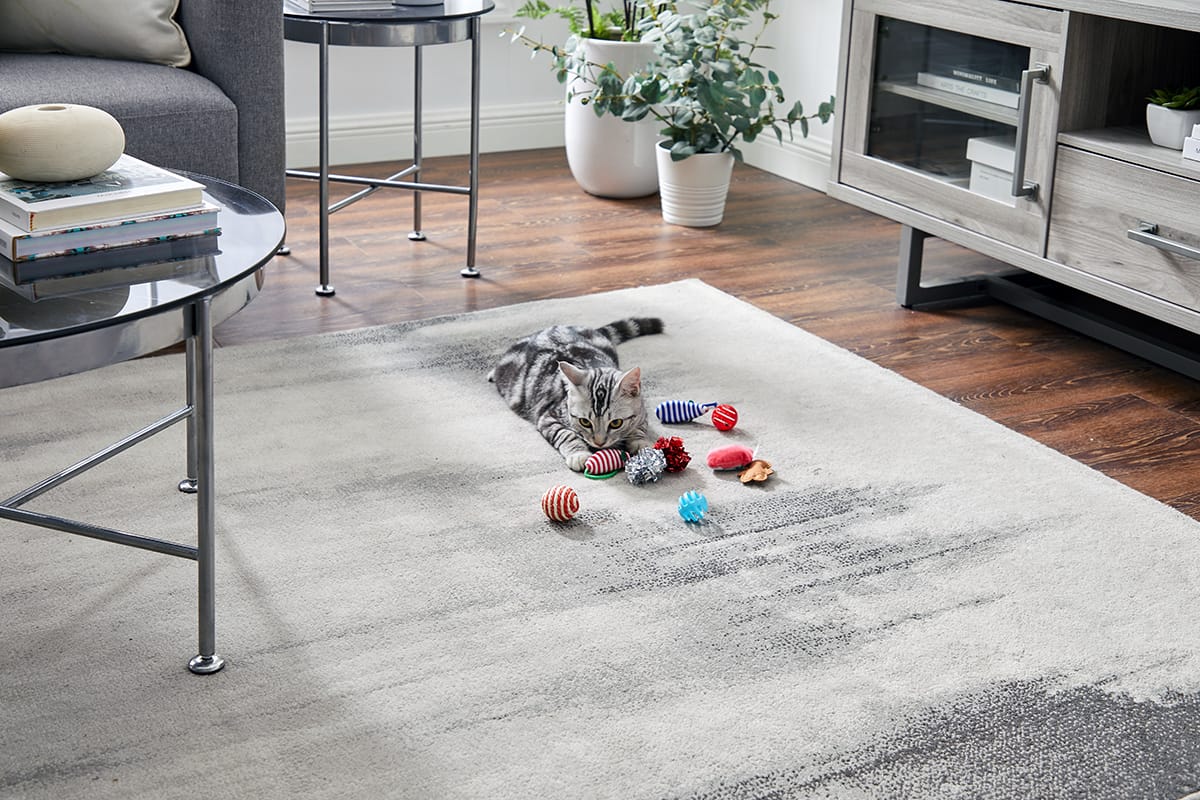
It’s that holly, jolly time of year again, and to ensure that every member of your family has a fun time this year, you’ll want to take the necessary steps to make sure they stay safe and healthy. For cat owners, that means keeping your cat out of the Christmas tree.
Aside from the mess it makes when that little furry climber makes his way up the tree and pulls it over on top of himself, it can also be dangerous to him and your family. He might not only hurt himself, but the tangle of electrical cords and lights can also spark a fire. What’s more, that furry little monster might also ingest something that can be poisonous which would make for a very sad Christmas.
To make sure none of that happens, use the techniques discussed above to give your cat other options and discourage him from attacking your tree when it comes to making merry this holiday season. That way you’ll ensure that every member of your family enjoys this wonderful time of year!
